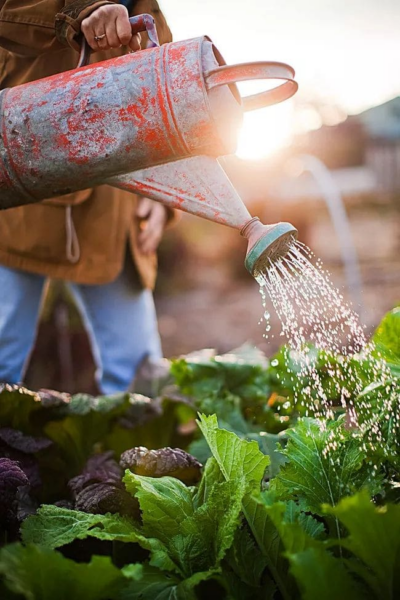Protecting Texas Lakes: A Comprehensive Guide to Conservation and Clean-Up Efforts
Texas, with its diverse landscapes and iconic water bodies, is home to numerous lakes that serve as crucial ecosystems, recreational hubs, and water sources for millions. From natural gems like Caddo Lake to man-made reservoirs such as Lake Travis, these lakes are vital for wildlife, local communities, and the state’s economy. However, threats like pollution, overuse, invasive species, and climate change put these valuable resources at risk. This comprehensive guide explores the importance of protecting Texas lakes, highlights ongoing conservation and clean-up efforts, and provides actionable steps individuals and communities can take to preserve them for future generations.
The Importance of Texas Lakes

1. Ecological Significance
Texas lakes are essential ecosystems that support a wide variety of plant and animal life. They act as habitats for fish, amphibians, birds, and aquatic plants, many of which rely on clean, oxygen-rich water to survive. Healthy lakes also help regulate local climates, recharge groundwater, and filter pollutants naturally.
2. Economic Value
Lakes in Texas play a significant role in supporting local economies. From fishing tournaments and recreational boating to tourism and real estate, lakes contribute billions of dollars annually. Many lakes also serve as reservoirs, providing water for agriculture, industry, and municipal use.
3. Recreational Opportunities
Texans and visitors alike flock to lakes for activities like swimming, kayaking, fishing, and camping. These recreational opportunities not only enhance quality of life but also foster community connections and mental well-being.
4. Water Security
As a semi-arid state, Texas depends heavily on its lakes for water storage and distribution. Preserving these water bodies ensures a reliable supply of water for drinking, irrigation, and industrial processes, especially during droughts.
Threats to Texas Lakes
1. Pollution
Pollution is one of the most pressing threats to Texas lakes:
- Runoff Pollution: Fertilizers, pesticides, and animal waste from farms can enter lakes through runoff, leading to algal blooms that deplete oxygen and harm aquatic life.
- Urban Development: Stormwater from cities often carries oil, heavy metals, and plastics into lakes, further degrading water quality.
- Recreational Litter: Trash left behind by visitors, including bottles, food wrappers, and fishing gear, accumulates in lakes, harming wildlife and ecosystems.
2. Overuse of Water Resources
Excessive water extraction for agriculture, industry, and residential use places immense pressure on Texas lakes. This overuse is particularly concerning during periods of drought when water levels naturally decrease.
3. Invasive Species
Non-native species like zebra mussels and giant salvinia disrupt lake ecosystems. These invasive species outcompete native flora and fauna, alter habitats, and damage infrastructure like water intake systems.
4. Climate Change
Climate change exacerbates many existing threats to Texas lakes. Rising temperatures increase evaporation rates, reduce water levels, and stress aquatic ecosystems. Meanwhile, extreme weather events can lead to flooding, which washes pollutants into lakes.
Conservation and Clean-Up Efforts in Texas

1. State-Led Conservation Programs
The Texas Parks and Wildlife Department (TPWD) and Texas Commission on Environmental Quality (TCEQ) play key roles in protecting the state’s lakes:
- Monitoring and Regulation: These agencies enforce water quality standards and monitor pollution levels to identify and mitigate threats.
- Invasive Species Management: Programs focus on controlling the spread of invasive species like zebra mussels through public education and boat inspection stations.
- Watershed Restoration: Efforts to restore watersheds surrounding lakes help reduce runoff pollution and improve overall water quality.
2. Community Clean-Up Initiatives
Communities across Texas regularly organize lake clean-up events to combat litter and pollution. Notable examples include:
- Lake Travis Underwater Cleanup: This annual event involves hundreds of divers, volunteers, and boaters who remove debris from the lake and its shoreline.
- Keep Texas Beautiful Campaign: A statewide initiative that engages communities in efforts to reduce litter and improve the environment, including lakefronts.
3. Nonprofit and Corporate Partnerships
Organizations like the Texas Living Waters Project work to protect and restore lakes through public awareness campaigns, advocacy, and on-the-ground restoration projects. Corporate sponsors often fund these initiatives, recognizing the importance of sustainable water management.
4. Technological Advancements
Innovations such as water filtration systems, drone-based monitoring, and bioengineering solutions are being deployed to combat lake pollution and restore ecosystems.
How Individuals Can Contribute to Lake Conservation

1. Reduce Personal Water Use
Water conservation at home can significantly reduce the strain on Texas lakes. Simple practices include fixing leaks, using water-efficient appliances, and watering lawns during cooler parts of the day.
2. Adopt Eco-Friendly Practices
- Use Biodegradable Products: Choose eco-friendly detergents, sunscreens, and cleaning products to minimize chemical runoff.
- Proper Waste Disposal: Always dispose of trash and hazardous materials responsibly to prevent them from entering water systems.
3. Participate in Lake Clean-Up Events
Join community efforts to clean up lakes and educate others about the importance of keeping water bodies litter-free. These events are great opportunities to make a tangible impact while connecting with like-minded individuals.
4. Advocate for Policy Change
Support policies and regulations that promote sustainable water use, pollution control, and habitat preservation. Vote for candidates who prioritize environmental protection and participate in public discussions about water resource management.
5. Educate and Inspire Others
Raise awareness about the importance of lake conservation within your community. Share tips, participate in educational programs, and use social media platforms to highlight success stories and best practices.
Case Studies: Success Stories in Texas Lake Conservation
Lady Bird Lake in Austin
Lady Bird Lake was once plagued by pollution and invasive species. Thanks to coordinated efforts by the city, nonprofits, and volunteers, the lake is now a thriving recreational spot with clean water and a balanced ecosystem.
Caddo Lake’s Restoration Efforts
Through partnerships with organizations like the Caddo Lake Institute, significant progress has been made in controlling invasive species and restoring native vegetation. The lake’s unique ecosystem continues to recover, attracting eco-tourists and researchers alike.
Lake Houston’s Watershed Protection Plan
Community-led efforts to improve the Lake Houston watershed have reduced urban runoff and enhanced water quality, ensuring a stable water supply for nearby cities.
Looking Ahead: The Future of Texas Lakes
The protection of Texas lakes is an ongoing effort that requires collaboration between individuals, communities, and governments. While challenges like climate change and urbanization pose significant risks, proactive conservation measures and public involvement can help secure the future of these vital resources.
Conclusion: Join the Movement to Protect Texas Lakes
Texas lakes are more than just scenic retreats—they are lifelines for ecosystems, communities, and economies. By understanding the threats they face and taking collective action, we can ensure their preservation for generations to come. Whether you’re reducing your water footprint, participating in clean-up events, or advocating for sustainable policies, every effort counts in safeguarding these natural treasures.
Q&A Section
Q: What are the biggest threats to Texas lakes?
A: Texas lakes face threats such as pollution from agricultural runoff and urban development, overuse of water resources, invasive species like zebra mussels, and the impacts of climate change, including drought and rising temperatures.
Q: How can individuals help protect Texas lakes?
A: Individuals can contribute by reducing water waste, participating in lake clean-up events, using eco-friendly products, properly disposing of waste, and advocating for sustainable water management policies.
Q: What are some examples of conservation efforts in Texas?
A: Efforts include state-led invasive species management, community clean-up events like the Lake Travis Underwater Cleanup, and nonprofit initiatives like the Texas Living Waters Project, which focuses on watershed restoration and public education.
Q: Are there success stories of Texas lake preservation?
A: Yes, Lady Bird Lake in Austin and Caddo Lake are notable examples where coordinated efforts have improved water quality, controlled invasive species, and restored natural ecosystems.





















